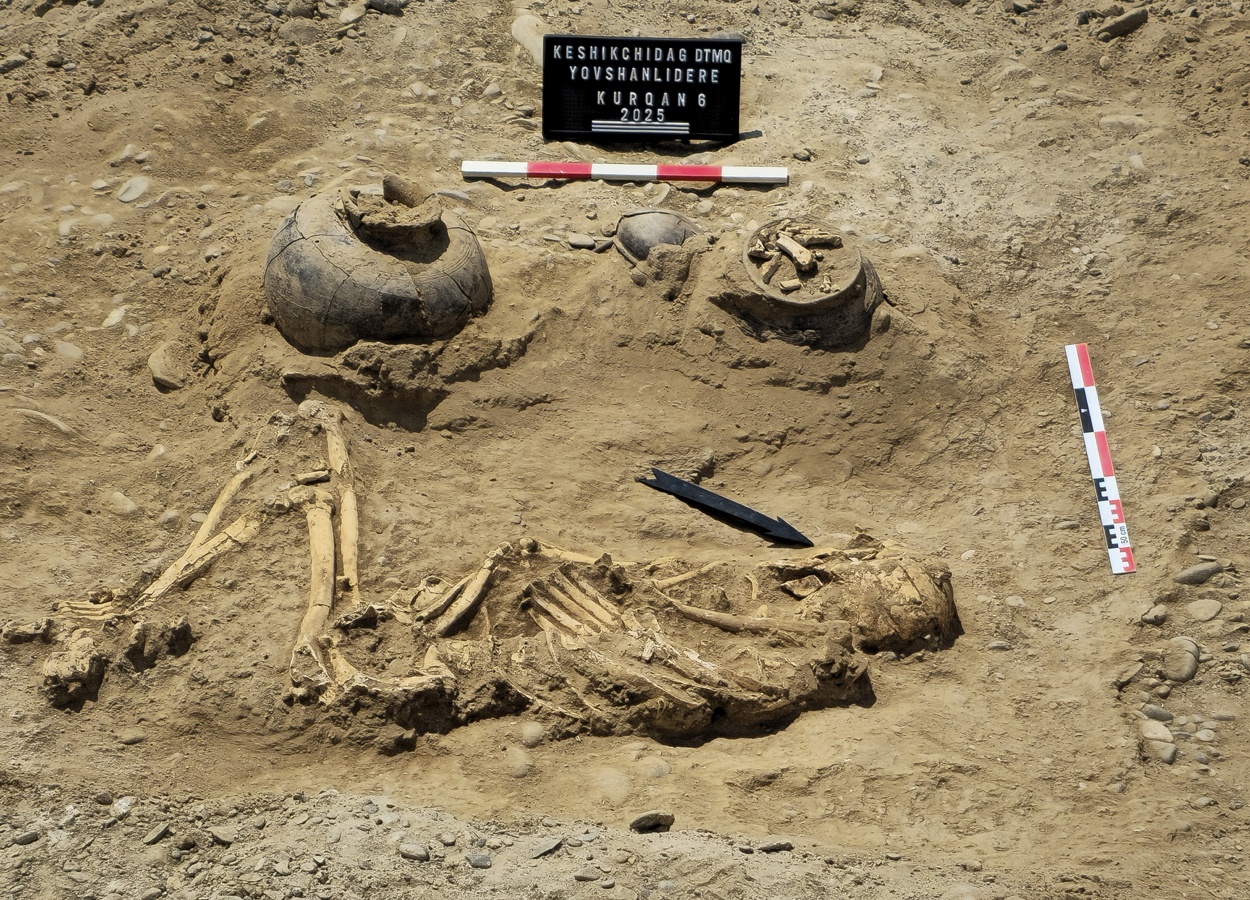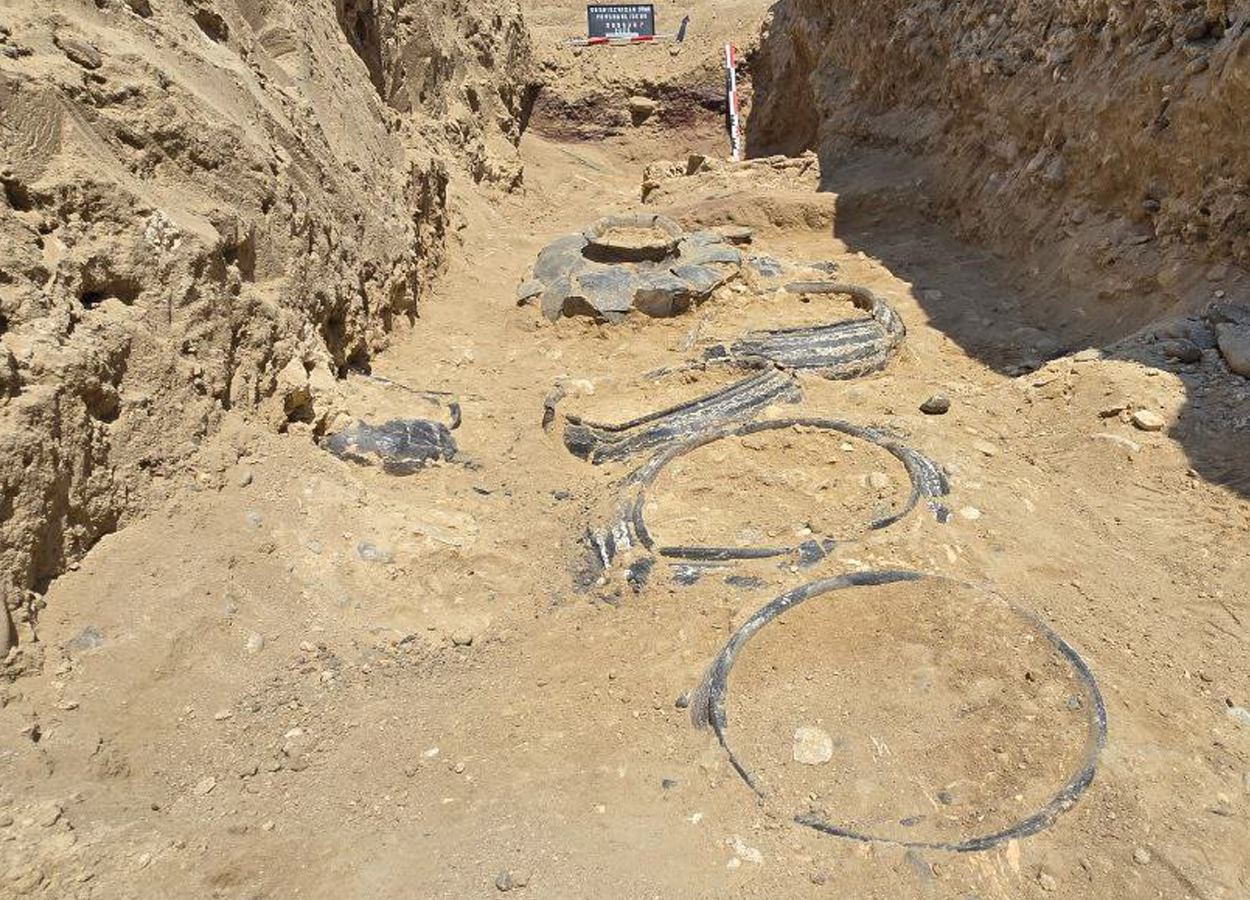Archaeologists in Azerbaijan have found an intact kurgan, an ancient burial mound dating back nearly 3,800 years during the Middle Bronze Age.
Led by Dr. Shamil Najafov of the Institute of Archaeology and Anthropology of ANAS, the excavation took place in the Ceyranchol plain, at a site locally known as “Yovsanlidere.”
Measuring 28 metres in diameter and rising 2 metres in height, the mound contains a burial chamber divided into three symbolic sections.
The first section is the final resting place of warrior, who was found with funerary offerings of weaponry and equipment. The second section contains various ceramic vessels, while the third has been left completely empty.
According to experts, this division is believed to symbolically reflect a belief in the afterlife, possibly representing a space for the deceased’s soul to be nourished and to find peace.

The warrior, estimated to have stood over two metres tall, was buried in a semi-flexed position and was found clutching a rare four-pronged bronze spearhead. Alongside him are bronze ankle adornments, obsidian tools, paste beads, and elaborately decorated ceramic jugs.
These vessels feature dotted and impressed patterns filled with white inlay, which contained the bones of cooked animals such as goat, cow, horse, and boar, interpreted as sustenance for the journey into the afterlife.
Above the tomb, archaeologists also discovered 14 massive limestone slabs, each weighing approximately one ton, and a carved bull-shaped idol placed at the head of the kurgan.
All artefacts were carefully documented, sketched, and in some cases restored directly on-site. Plans are underway for advanced scientific analyses, including Carbon-14 dating and metallurgical testing.
Header Image Credit : State Historical-Cultural Reserve
Sources : Ministry of Culture of the Republic of Azerbaijan





